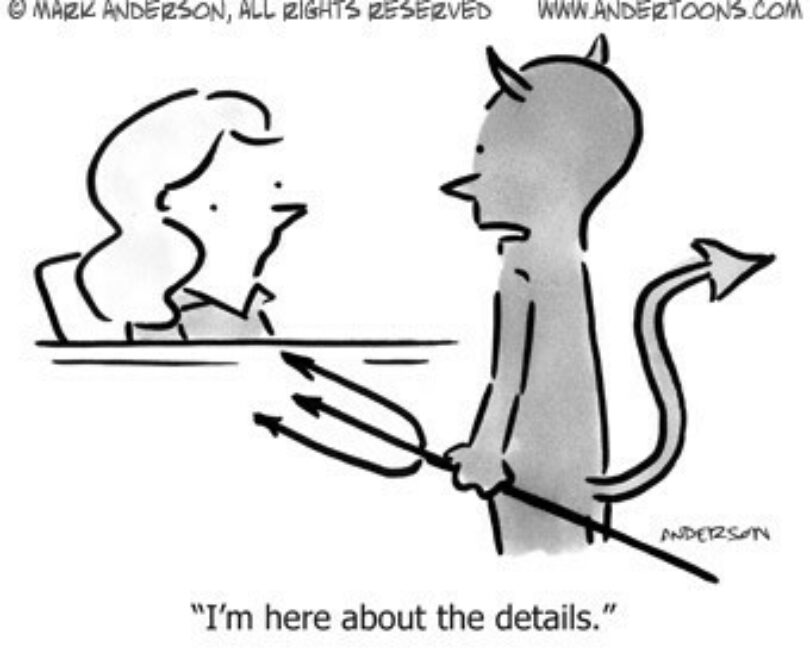What are the top 10 trends for the next ten years? Download the report here.

You’ve been there.
It’s the end of a two-day offsite retreat. Your task was to develop a new 5-year roadmap. But as morning became lunch and the afternoon turned into happy hour, hope waned. You hadn’t heard any new ideas. Maybe Day 2 would be different.
It wasn’t. The loudest voices at the office were the loudest voices here. The pain-in-the-ass who always asks the hard questions was heard…and then politely ignored.
Now you’re in the last hour. Just 60 minutes to go. As the facilitator recaps the strategy and clarifies the next actions, you get the sickening feeling that all of this was a charade. There’s nothing in this plan that surprises or excites you. You didn’t learn anything, your participation was rote, and the exciting stuff was delivered by outsiders — SMEs, consultants, industry pundits — who came, shared slides, and left.
You’ve
just spent two days of your life doing the corporate ritual called strategic planning…but the plan you have doesn’t seem very strategic at
all.
If this sounds familiar, it is. Most strategic plans are nothing more than updates of past years’ plans. Most strategic plans don’t require two-day offsites; they just need the “Find and Replace” feature in most word processing systems.
Enter red teaming.
Red teaming is a technique that intentionally inserts contrarian thinking into group processes as a means to root-out groupthink and cognitive bias. Red teaming doesn’t ignore the pain-in-the-ass who asks the tough questions. It anoints her…and trains others to do what she does. Red teaming formalizes the role of “devil’s advocate” and pushes teams to consider alternative points of view or contemplate worst case scenarios.
Who uses Red Teaming?
Red teaming has recently been formalized
by the US Army after stinging results in Iraq and Afghanistan, but its
history dates back to the Vatican’s “Office of the Devil’s Advocate”
whose job it was to thoroughly investigate candidates for sainthood and debunk false claims.

Red teaming is both a mindset and a set of techniques. Both have been outlined in books by authors Micah Zenko and Bryce Hoffman.
What is the Red Team Mindset?
A red team mindset requires not taking anything for granted, challenging everything, and thinking the unthinkable. Red teaming is about looking at the future, and not getting burdened by the past.
How is Red Teaming Used?
Red teaming is about rigorous questioning and thinking unconventionally, i.e.:
- Cybersecurity — Companies hire specialized red teams to attack their technology and exploit security vulnerabilities. Going beyond standard penetration tests, red teams will act as aggressively and unrestricted as any hacker would.
- Intelligence — NATO, the CIA, the Israeli army, etc. all have teams dedicated to doing “alternative analysis”, set up explicitly to challenge prevalent assumptions within intelligence bodies.
- Business — When developing a business strategy, companies often base plans on a best-case scenario, assuming that everything will go to plan. Red teaming exercises help expose strategic gaps or flaws, helping companies scan the business environment for both threats and opportunities.
How can Red Teams be used in Foresight?
Cognitive bias training is a good first start, but additional red teaming is recommended. Three categories of red teaming techniques are noted below:
- Question the Unquestionable
Use analytical tools to question the arguments and assumptions that often go unquestioned during the regular planning process.
Subject matter experts (SMEs) and provocateurs can respectfully challenge “group think.”
![Dilbert: Are there any questions? [Silent audience.] Do you ever feel alone when you're with people?](/assets/images/graphics/_imageBlockHalfLayout1x/Dilbert-questions.gif)
2. Think the Unthinkable
Using imaginative techniques to figure out what could go wrong — and what could go right — with the plan in order to expose hidden threats and missed opportunities.
It is helpful to design multiple plausible futures of “what could happen,” and review the results with stakeholder groups to help see what’s missing.
3. Challenge Everything
Applying contrarian thinking to challenge the plan and force the organization to consider alternative perspectives.
This can be the trickiest, because someone who is always contrarian is seen as a drag on the process. It’s useful for all red teams, but especially for this role, to assign the role to someone for an agreed-upon period of time, and to clearly signal when you’re playing this role.

My dog Pip challenges everything that comes near our yard. She’s a natural at red teaming
Who is a good Red Team member?
Micah Zenko argues that red teaming is most successful when those who are asked to “red team” are:
(a) knowledgeable experts; and
(b) not part of the core team, because the team that designs a plan cannot help but be blind to some of the embedded assumptions.
Effective red team members should:
- have the necessary domain knowledge, but not already be invested in the project’s direction
- be the kinds of people who can identify correlations or interactions that others overlook
- be able to put themselves in the mindset of a motivated adversary, and should be familiar with what actual adversaries actually do.
- be able to step back and look with fresh, skilled eyes, and not be afraid to describe what they see.
Thinking about this list above, many organizations use stakeholders including emerging young talent to “red team” at discrete points in a planning process.
The Rules of Red Teaming (Hoffman)
Rule 1: Don’t be a jerk
Rule 2: Red teams must have top cover
Rule 3: Red teaming only works if you let it
Rule 4: Don’t red team things to death
Rule 5: Red team your red team
Rule 6: You don’t always have to be right, but you can’t always be wrong
Rule 7: Don’t give up
What Red Teaming is NOT
- A challenge to leadership — The red team’s role is to empower leaders and managers to make better decisions by providing them with a more objective analysis, a more comprehensive picture of the business environment, and alternative options to consider.
- A creator of new plans — Hoffman stresses that red teams don’t make plans. In contrast, their purpose is to make existing plans better.
- Always right (or has to be right) — Red teams don’t need to be right to be effective. They work more effectively in those environments where it’s ok to be wrong.
Could Red Teaming Work for You?
Here are three questions to reflect on the value of red teaming:
- Based on your experience, which area of “red teaming” does your organization struggle with most: Questioning the unquestionable; Thinking the unthinkable; or Challenging everything?
- Can you think of a recent decision where red teaming would have been useful? What was the decision and what was the result? How could red teaming have helped? Who would be good red team members?
- Was a red team involved in designing your current strategic plan? Can you imagine which parts of your strategic plan a red team might question or challenge? How could you organize and use a red team in the future?
Red Teaming-What Why How:
If you enjoyed this post, please subscribe to our newsletter.

Rebecca Ryan, APF
Rebecca Ryan captains the ship. Trained as a futurist and an economist, Rebecca helps clients see what's coming - as a keynote speaker, a Futures Lab facilitator, an author of books, blogs and articles, a client advisor, and the founder of Futurist Camp. Check out her blog or watch her Q&A on how NGC helps organizations prepare for the future using Strategic Foresight. Contact Lisa Loniello for more information.
Yasemin Arikan Promoted to Director of Futures Research
NEXT Generation Consulting (NGC) announced the promotion of Yasemin Arikan to Director of Futures Research. Arikan will lead the company’s efforts to...
Is Your Housing Market Ready for Your Future?
One of the biggest problems facing many cities and towns is inadequate housing. This problem is most acute for seniors, veterans with disabilities, and low-income groups ...
Three Things Martha Stewart Gets Right About Return to Office (RTO)
The original influencer and the person who invented the "Home" retail category, Martha Stewart, became the latest CEO to tell employees to get back to the office five day...







